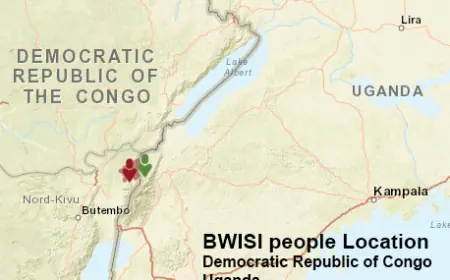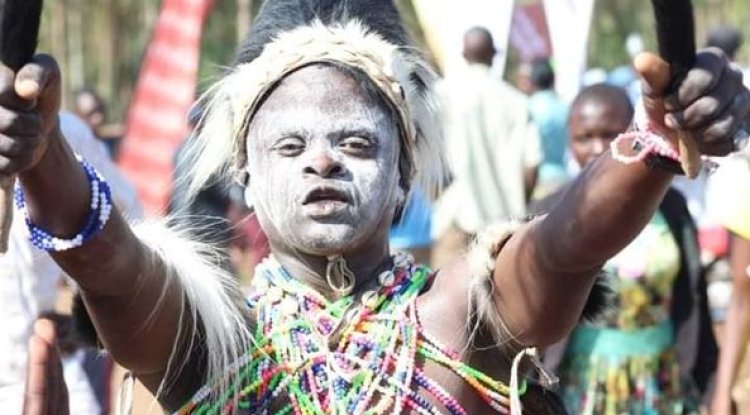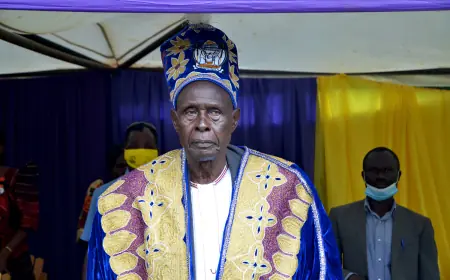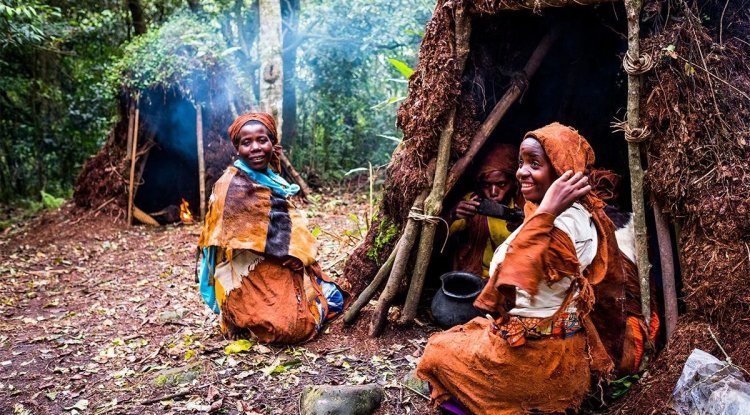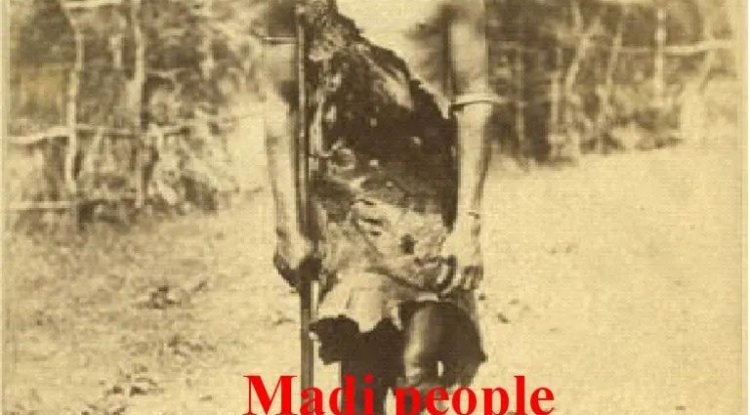The Babukusu
The babukusu tribe is one of the sub-nations of the luhya bantu people of East Africa. They reside mainly on the slopes of Mount Elgon, a dormant volcano that straddles the border between Uganda and Kenya.
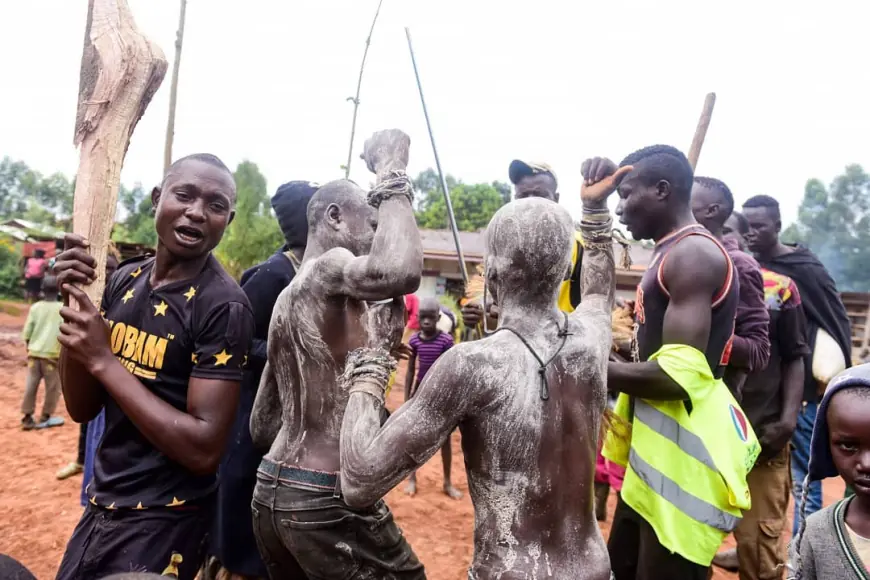
Imagine living in a place where you can witness the beauty of nature, the richness of culture, and the warmth of community. A place where you can trace your ancestry back to the first man and woman created by God. A place where you can celebrate your identity and traditions with pride and joy. This is the place where the babukusu tribe of Uganda lives.
Babukusu Indigenous community are neither the Gisu nor Bamasaaba. They are independent with their ancestral heritage, even though they have similar cultural practices.
The babukusu tribe is one of the sub-nations of the luhya bantu people of East Africa. They reside mainly on the slopes of Mount Elgon, a dormant volcano that straddles the border between Uganda and Kenya. They are closely related to the bukusu tribe of Kenya, who speak a similar dialect and share many customs and beliefs.
The Babukusu tribe has a rich and fascinating history that is steeped in myth and legend. According to their oral traditions, they are the descendants of Mwambu, the first man, and Sela, the first woman, who were created by Wele Khakaba, the supreme God. Mwambu and Sela lived in a place called Mumbo, in the west, where they multiplied and gave birth to many children. Some of these children migrated to different parts of the world, while others stayed in Mumbo.
One of the sons of Mwambu and Sela was Masaba, who was the ancestor of the babukusu tribe. Masaba and his followers left Mumbo and settled on the foothills of Mount Elgon, which they named after him. They lived in harmony with nature and developed a unique culture and identity. They also interacted with other tribes and groups, such as the baganda, the banyoro, the kalenjin, and the karamojong, who influenced their language, religion, and politics.
The Culture and Traditions of the Babukusu Tribe
The babukusu tribe has a vibrant and diverse culture that reflects their values, beliefs, and way of life. Some of the aspects of their culture include:
The clan system
Indigenous community of Babukusu The Bududa district's clans are known as Kamatosi in the traditional sense. Each clan has a totem known as Shimusuru, and the clan chief is referred to as Namukhongo. With more than 3,000 years of greatness, all of these clans are situated in the Bududa district of Bukusuland.
The babukusu tribe is divided into several clans, each with its own name, totem, and history. The clans are based on patrilineal descent, meaning that one inherits the clan of their father. The clans are also exogamous, meaning that one cannot marry someone from the same clan. There are thirty-three Clans of Babukusu Indigenous community of Uganda, namely:
- Namasho
- Nanyele,
- Nekhambi,
- Nakuwa,
- Namwamba
- Nanzeshe
- Shishendu Siila,
- Namwani
- Nashinde,
- Namyendo,
- Malabasi,
- Natsonzo,
- Nambulwe,
- Tolondi,
- Shibumba,
- Nekoshe,
- Naluwa,
- Yarakha
- Nashula,
- Nekhoyo,
- Nanjetse,
- Nalufutu
- Silikwa,
- Napala
- Namaremu
- Mwalie,
- Neala
- Nashalilisa
- Malaba
- Nabayi,
- Kikayi
- Nanjetse
- Nabalosi.
Six Babukusu clans—Silikie, Mwalie, Neala, Malaba, Nabayi, and Naluwa—were split apart in Western Kenya as a result of colonial division.
The clans play a significant role in the social, political, and religious affairs of the tribe.
Leadership
Umukhungu Mukusu, king of Babukusu, is the title given to the traditional leader of Babukusu. in the Ugandan district of Bududa by the name of Kanyaanya Joseph Wash.
The imbalu ceremony
This is the most important and celebrated tradition of the Babukusuu tribe. It is a rite of passage that marks the transition of boys into men. It involves the circumcision of the initiates, who are usually between the ages of 15 and 18. The ceremony is held every even year, between August and December, and attracts thousands of people from within and outside the tribe. The imbalu ceremony is a festive and colorful event that involves singing, dancing, drumming, and feasting. It is also a time to honor the ancestors, seek blessings from God, and affirm the unity and identity of the tribe.
The music and dance
The babukusu tribe has a rich and diverse musical heritage that expresses their emotions, stories, and values. They use various instruments, such as drums, flutes, horns, rattles, and lyres, to create melodies and rhythms that accompany their songs and dances. Some of the genres of music and dance that the babukusu tribe performs are: kadodi, a fast-paced dance that welcomes the imbalu initiates.
The Challenges and Opportunities of the Babukusu Tribe
The babukusu tribe, like many other indigenous tribes in Africa, faces various challenges and opportunities in the modern world. Some of these include:
- The loss of culture and identity: The babukusu tribe is under the threat of losing its culture and identity due to the influences of globalization, urbanization, education, and religion. Many young people are abandoning their traditions and customs and adopting foreign lifestyles and values. This erodes the sense of belonging and pride that the tribe has. To preserve and promote their culture and identity, the babukusu tribe needs to document and teach their history, language, and practices to the younger generations. They also need to engage in cultural exchange and dialogue with other tribes and groups to foster mutual respect and understanding.
- poverty and underdevelopment: The babukusu tribe is among the poorest and most marginalized groups in Uganda. They lack access to basic services such as health, education, water, and electricity. They also face challenges such as land disputes, environmental degradation, and human rights violations. To overcome these challenges, the babukusu tribe needs to empower themselves economically, socially, and politically. They need to form cooperatives and associations that can help them access markets, credit, and information. They also need to advocate for their rights and interests and participate in the decision-making processes that affect them.
Conclusion
The Babukusu tribe of Uganda is a hidden gem of African culture that deserves to be recognized and appreciated. They have a rich and fascinating history that traces their origins to the first man and woman created by God. They have a vibrant and diverse culture that reflects their values, beliefs, and way of life. They have a remarkable talent and skill for producing various forms of art and craft that reflect their culture and environment. They also have a lot of potential and creativity that can be harnessed for their benefit and development. The Babukusu tribe is a proud and noble people who have a lot to offer the world.
What's Your Reaction?
 Like
0
Like
0
 Dislike
0
Dislike
0
 Love
0
Love
0
 Funny
0
Funny
0
 Angry
0
Angry
0
 Sad
0
Sad
0
 Wow
0
Wow
0





























































